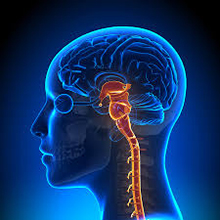Brain Swelling and Death in Children with Cerebral Malaria

Abstract:
Cerebral malaria is the most severe neurological
impediment of infection and it is caused by Plasmodium
falciparum idro et al. The article was aims to
determine the main pathogenic processes and causes of death of children
infected with cerebral malaria, by using clinical observations and pathologic
findings, among children admitted with cerebral malaria who fulfil the world
health organization criteria for cerebral malaria (WHO). The article further emphasises
in regard using treatment challenges facing the children affected by cerebral
malaria.
Using
Artesunate in the treatment of cerebral malaria was found to be infective in
complete eradication of the parasite that causes the disease. The article
proposes that an enlargement in brain volume caused by the pressure exerted
within the brain of children infected with cerebral malaria will be considered
as the main cause of death. The article looks forward for its contribution to
the population affected with malaria by inputting new scientifically proven
knowledge that enhances new drug development.
The
article begins with general introduction and proceeds by mentioning the aims
and problems and the importance of the study. So, to address the stated problem
the article uses an observational study design on children suffering from
cerebral malaria. The article bases on numerous literature reviews, this
supports the significance of the research. The comparison statistical analysis
which was done on children with cerebral malaria who survive verses who lived.
The
study was carried out in Queen Elizabeth Central hospital in Blantyre Malawi,
from 2009 to June 2011.
References:
[1].
Beare N. A.V, Taylor TE, Harding SP,
Lewallen S and Molyneux M, 2006. Malarial retinopathy: A newly established
diagnostic sign in sever malaria.
[2].
Brown H, Rogerson S, Taylor T, Tembo M, Mwenechanya J, Molyeux M and
Turner G, 2001. Blood-brain barrier function in
cerebral malaria in Malawian children.
[3].
Dondorp A, Nosten F, Stepniewska K, Day
N, White N. Artesunate versus quinine for treatment of severe falciparum
malaria: a randomised trial. Lancet 2005; 366:717-25.
[4]. Idro R, Jenkin e N, Newton
RJC Charles, 2005. Pathogenesis,
clinical features, and neurological outcome of cerebral malaria.
[5].
Lewallen S, Taylor E Terrie, Molyneux
E. Malcom, Wills A Bridget, Courtright P, 1993. Ocular Fundus findings in
Malawian children with cerebral Malaria.
[6].
Newton RC, Peshu N, Kendall B, Kirkham,
Sowunmi A, Waruiru C, Mwangi I, Murphy AS and Marsh K, 1994. Branin swelling
and ischaemia in Kenyans with cerebral malaria.
[7]. Newton, CRJC, Winstanley
PA, Peshu.N, Marsh, RRCP, Kirkham. F.J Pasvol. G and Warrel DA., 1991.
Intracranial pressure in African children with cerebral malaria
[8]. MacPherson GG, Warrell MJ, White NJ,
Looareesuwan S, Warrell DA. Human cerebral malaria: a quantitative
ultrastructural analysis of parasitized erythrocyte sequestration. Am J Pathol
1985;119: 385-401.
[9].
Murphy CS and Breman GJ, 2001. Gaps in
the childhood malaria burden in Africa: cerebral Malaria, Neurological
sequelae, Anemia, Respiratory Distress, hypoglycaemia and complications of
pregnancy.
[10].Potchen MJ, Kampondeni SD, Seydel KB,
et al. Acute brain MRI findings in 120 Malawian children with cerebral malaria:
new insights into an ancient disease. AJNR Am J Neuroradiol 2012;33:1740-6.
[11].Taylor TE, Fu WJ, Carr RA, et al. Differentiating the
pathologies of cerebral malaria by postmortem parasite counts. Nat Med
2004;10:143-5.
[12].Waller D, Crawley J, Noster. F, Chapman D, Krishna S, Craddock
C, Brewster D and White JN, 1990. Inracranial pressure in childhood cerebral
malaria.
[13].Wassmer CS, Combes V and Grau EG, 2003 Pathophysiology of
cerebral malaria.
[14].World malaria report. Geneva: World Health Organization, 2014
(http://www.who.int/malaria/publications/world_malaria_report/en).

